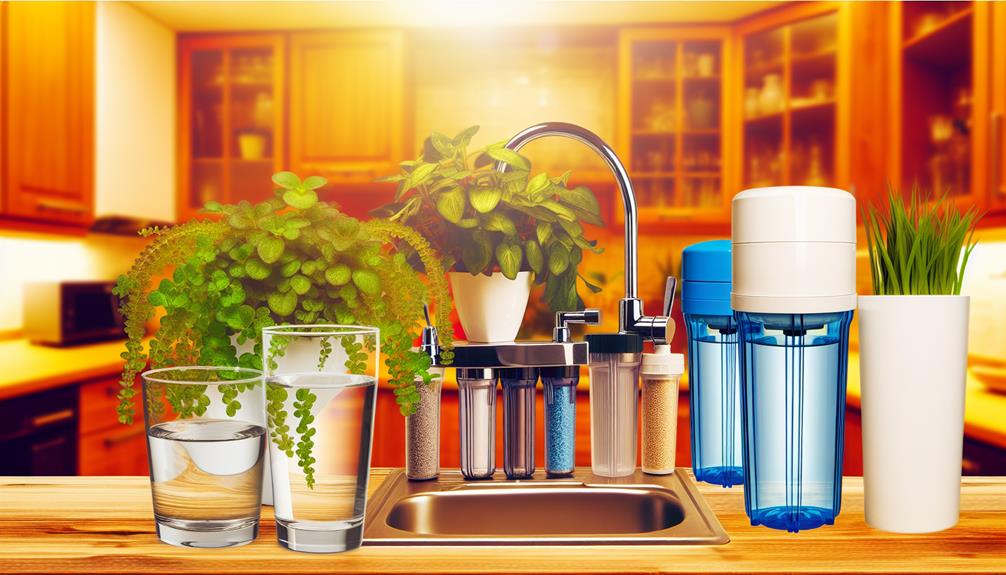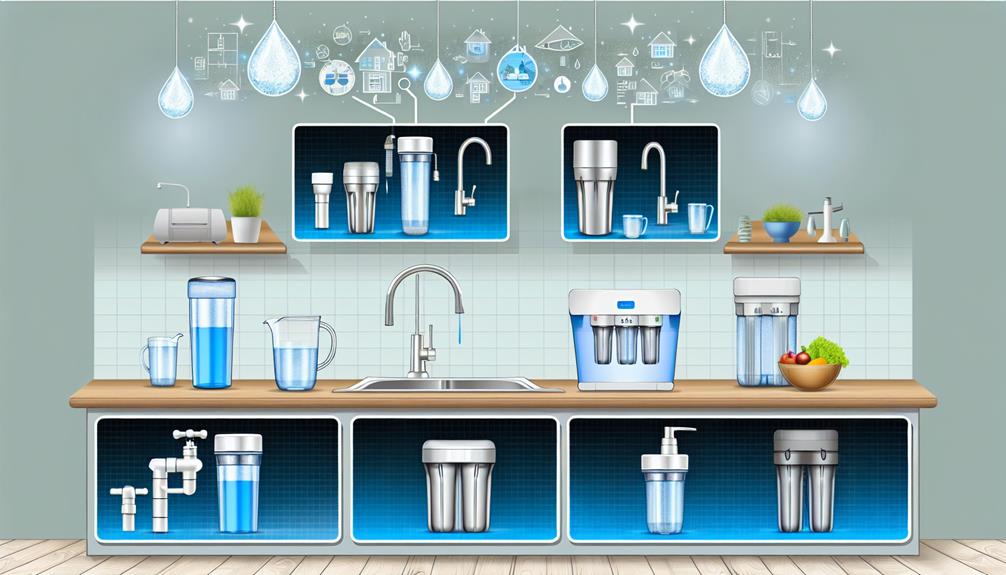In an era where knights no longer guard our wells, you're the sentinel of your home's water purity. As you stand watch over your family's health, the myriad choices in home water filtration systems can seem as daunting as a dragon's lair.
It's crucial to sift through the marketing fluff to unearth the systems that genuinely offer the elixir of cleanliness and taste. Whether you lean towards the sophistication of reverse osmosis, the reliability of activated carbon filters, or the simplicity of gravity-based purifiers, the details matter.
We've laid out the pros and cons, the ins and outs, and the fine print of top contenders to help you make an informed decision. Stay with us as we compare the trustworthiness of these systems, guiding you to find the guardian for your grail of hydration.
Understanding Filtration Technology
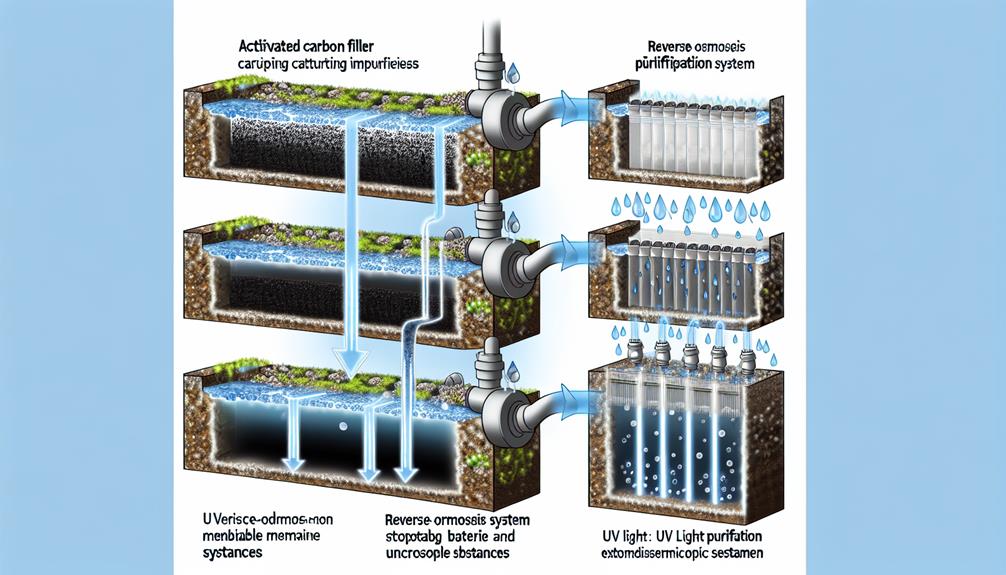
Every water filtration system relies on specific technology to remove contaminants and improve water quality for safe consumption. Two fundamental processes you'll come across are sediment trapping and ion exchange, both critical in achieving clean water.
Sediment trapping is a mechanical filtration process where a porous medium captures particulate matter such as dirt, rust, and sand. In your home system, you'll often find fine mesh filters or pleated fabric designed to intercept these particles. The efficacy of this method hinges on the micron rating of the filter – the lower the number, the finer the sediments it can trap. It's imperative to replace these filters periodically to prevent clogging and maintain optimal flow rates.
Ion exchange, on the other hand, is a chemical process that's essential for water softening, which targets dissolved inorganic materials. Resins within the system attract and bind mineral ions, such as calcium and magnesium, which contribute to water hardness. In exchange, the resin releases benign ions, typically sodium or potassium. This exchange prevents scale buildup and can prolong the lifespan of your plumbing and appliances.
Both methods are integral to a comprehensive water treatment strategy, ensuring you've got access to purified water in your home.
Reverse Osmosis Systems Reviewed
Building on the foundational knowledge of sediment trapping and ion exchange, let's now examine reverse osmosis systems, which offer a more advanced level of contaminant removal for your home's water supply. These systems integrate a semi-permeable membrane that meticulously filters out impurities, including dissolved salts, bacteria, and pyrogens.
You'll find these systems' installation ease varies, with under-sink models being the most common for residential use. They typically require a connection to your cold water line and an available drain for reject water. While DIY kits are available, professional installation ensures optimal performance and prevents potential water damage from incorrect setup.
When assessing maintenance costs, consider the lifespan of the reverse osmosis membrane and associated pre- and post-filters. The membrane, the system's core, usually lasts between two to five years, depending on water usage and quality. Prefilters, which protect the membrane from sediment and chlorine, and post-filters, which polish the water post-membrane, may need biannual replacements.
Activated Carbon Filters Compared
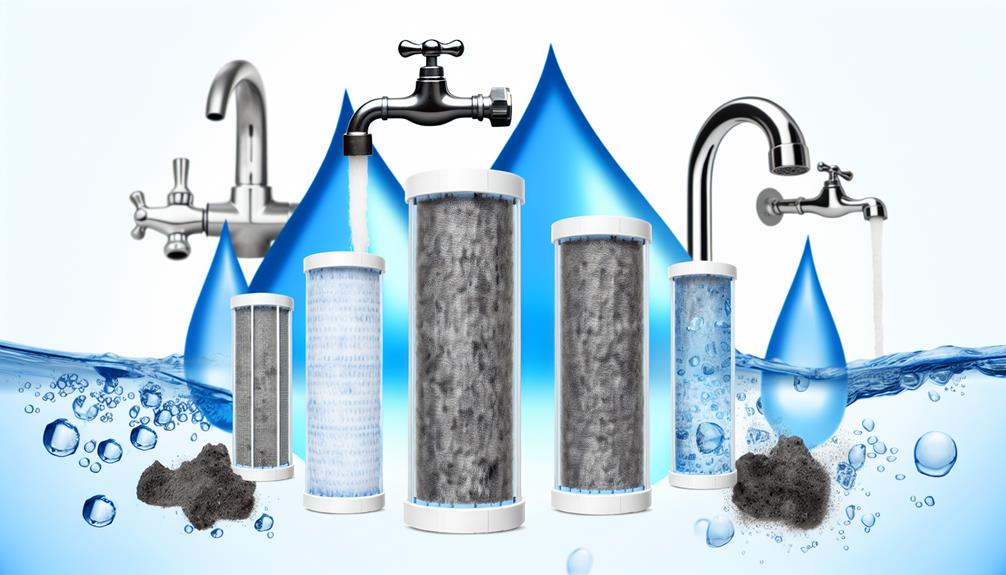
Turning our attention to activated carbon filters, these systems leverage the adsorptive power of carbon to remove organic compounds and chlorine from your home's water. As you delve into the specifics, you'll find that activated carbon filters are prized for their contaminant removal efficiency, particularly with volatile organic compounds (VOCs), pesticides, and byproducts of water chlorination processes like trihalomethanes.
You should note that the filter lifespan of these systems is a critical metric to consider. It's contingent on the concentration of contaminants in your water and the amount of water your household consumes. Generally, activated carbon filters require replacement every 3 to 6 months to maintain optimal performance. Some models feature indicators that alert you when it's time for a change, mitigating the guesswork associated with maintenance.
In comparing various activated carbon filters, assess the micron rating, which determines the size of the particles the filter can effectively remove from the water. Lower micron ratings equate to finer filtration, but this can also lead to a reduced flow rate and a shorter filter lifespan due to quicker clogging. It's a balance between thorough contaminant removal and the practicality of filter maintenance.
Ultraviolet Purification Effectiveness
While activated carbon filters excel in trapping particulates and chemicals, ultraviolet purification systems offer an effective method for eradicating bacteria and viruses without the use of chemicals. When you're seeking microbial control in your water supply, ultraviolet (UV) purification is a powerful ally. This technology works by exposing water to UV light at a specific wavelength, which damages the DNA of microorganisms, rendering them harmless.
For water clarity, UV systems are best paired with other filtration methods, as they do not remove suspended particles. This ensures you're not just getting microbiologically safe water, but also aesthetically pleasing water clarity.
Here's a table to summarize the effectiveness of UV purification:
| Feature | Benefit | Consideration |
|---|---|---|
| Chemical-free | No byproducts or changes in taste | Pre-filtration needed for turbidity |
| Microbial control | Inactivates bacteria, viruses, protozoa | Requires electricity to operate |
| Maintenance | Minimal; periodic bulb replacement | Effectiveness depends on water clarity |
| Instantaneous treatment | Immediate disinfection upon exposure | Does not provide residual protection |
Remember to maintain the UV system according to the manufacturer's instructions to ensure peak performance and safety. Regular bulb replacement is critical, as the intensity of UV light diminishes over time.
Gravity-Based Filters Assessment
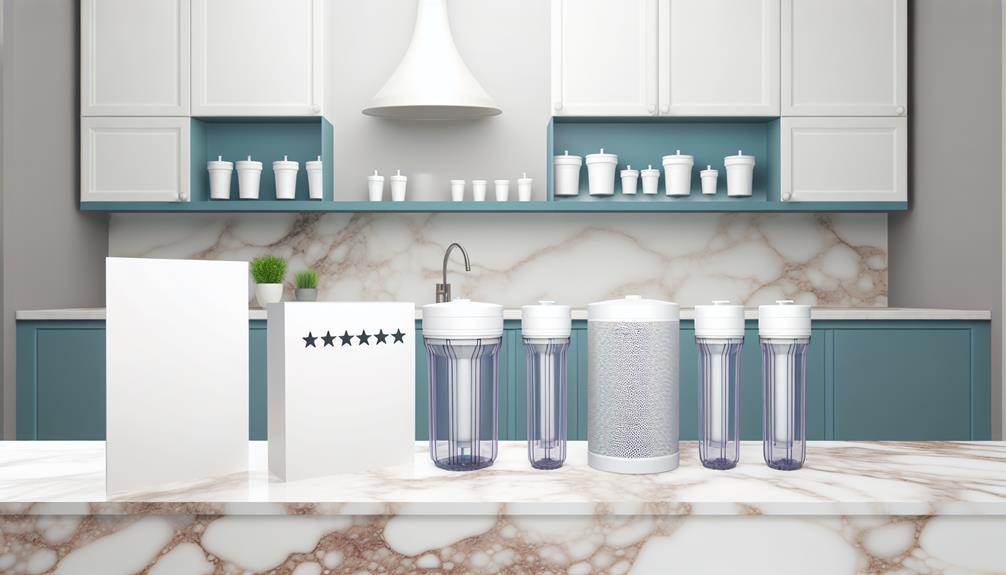
If you're considering a low-maintenance and portable option for water purification, gravity-based filters are an efficient choice for removing contaminants without the need for electricity or plumbing. These systems leverage the natural force of gravity to draw water through a filter media, effectively reducing a wide range of contaminants.
When evaluating gravity-based filters, consider the following technical aspects:
- Filter Maintenance
- Replacement frequency: assess how often the filter elements need replacing to maintain optimal performance.
- Cleaning procedures: understand the ease of disassembling and cleaning the unit to prevent clogging and bacterial growth.
- Contaminant Reduction
- Specificity: check the types of contaminants the filter is certified to reduce, such as bacteria, viruses, chemicals, and heavy metals.
- Certification standards: ensure the system meets industry-specific guidelines like NSF/ANSI standards for guaranteed contaminant reduction efficacy.
Conclusion
You've explored various filtration technologies, weighing the pros and cons.
Reverse osmosis systems offer superior purification, stripping water of nearly all contaminants.
Activated carbon filters efficiently remove chlorine and odors, enhancing taste.
Ultraviolet purification provides an extra layer of safety against microorganisms.
Gravity-based filters offer convenience and portability.
Your choice hinges on specific water quality concerns and desired maintenance levels.
Invest wisely—clean water is pivotal for your health and home.
